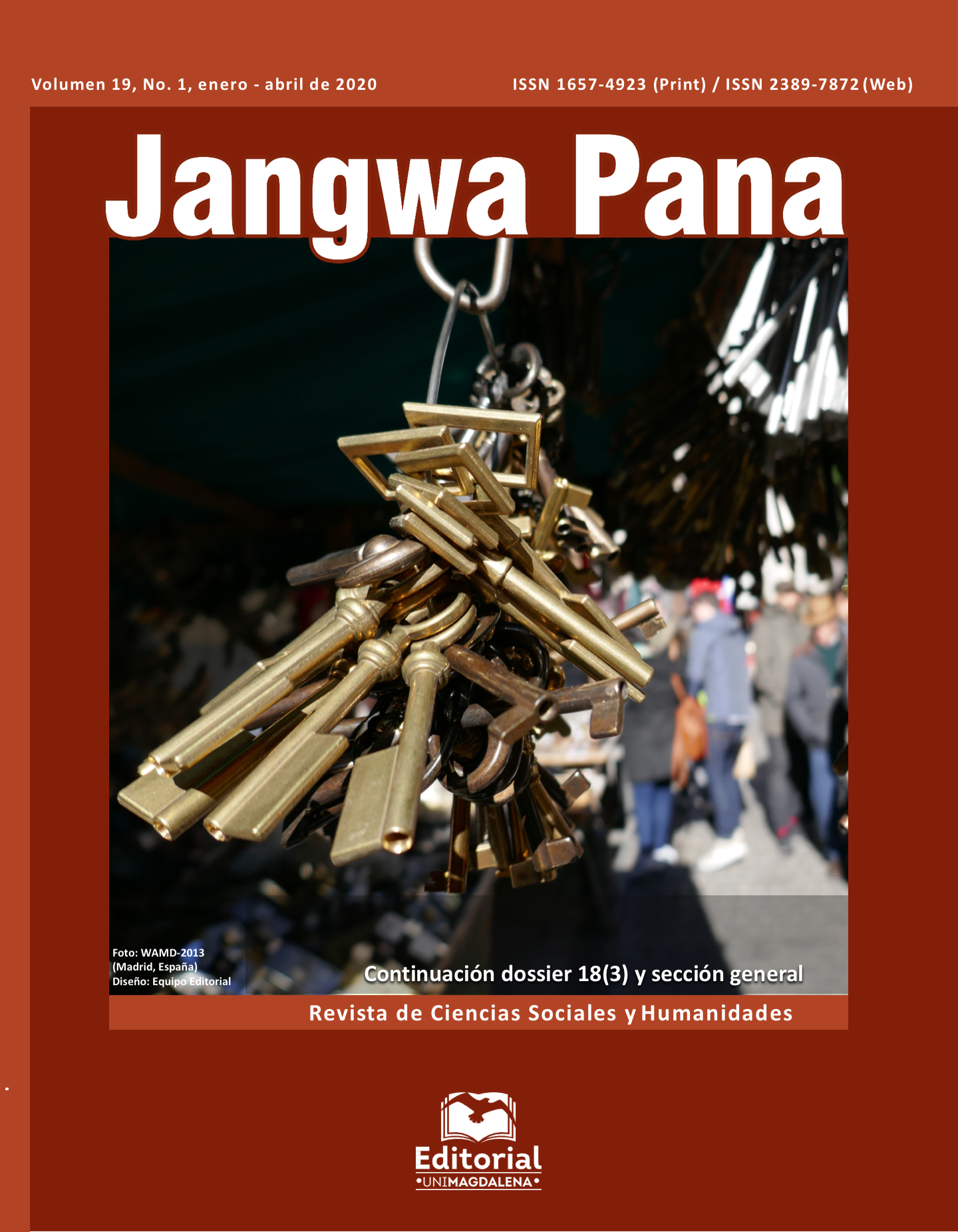Analysis of stable isotopes in human and wildlife skeletal remains in the archeological sites of the early and middle Holocene Tequendama and Aguazuque (savanna of Bogotá, Colombia)
Main Article Content
Abstract
Some archaeological studies on the processes of social change of the societies that existed during the early and middle Holocene in Colombia have taken place in the Sabana de Bogotá (Colombia). The research carried out by G. Correal and T. van der Hammen in the archaeological sites of Tequendama and Aguazuque are relevant examples. These authors collected important information on lithic artifacts, plant remains, pottery and human and animal skeletons that provide information on the lifestyles of the humans who inhabited these sites.
In 2014, a new study focused on the re-excavation of the Tequendama and Aguazuque sites through nine 50x50 cm columns. This document will present the results obtained from the analysis of stable isotopes obtained from human and wildlife bone remains to approximate the diet of some of the inhabitants who occupied the archaeological sites of Tequendama and Aguazuque, which present an occupation between the Early and middle Holocene and the transition from hunting and gathering to the first processes of horticulture and agriculture in these sites.
Downloads
Article Details
References
Cárdenas, F. (2002). Datos sobre la alimentación prehispánica en la Sabana de Bogotá, Colombia. Bogotá: Instituto Colombiano de Antropología e Historia.
Castaños, J., Murelaga, X., Castellanos, I., Olazábal, A. y Zuluaga, M. (2010). Evaluación del grado de diagénesis en huesos fósiles mediante espectroscopía de infrarrojos. Geogaceta, 49, 11-14.
Correal, G. y Van der Hammen, T. (1977). Investigaciones arqueológicas en los abrigos rocosos del Tequendama: 12.000 Años de historia del hombre y su medio ambiente en la altiplanicie de Bogotá. Bogotá: Fondo de Promoción de la Cultura del Banco Popular.
Correal, G. (1990). Aguazuque: evidencias de cazadores, recolectores y plantadores en la altiplanicie de la Cordillera Oriental. Bogotá: Fundación de Investigaciones Arqueológicas Nacionales, Banco de la República.
Delgado, M. (2012). Dental and craniofacial diversity in the northern Andes, and the early peopling of South America. En L. Miotti, M. Saleme, N. Flegenheimer y T. Goebel (Eds.), Southbound: Late Pleistocene peopling of Latin America. Texas: Center for the study of the first americans (pp. 33-38). Texas: Department of Anthropology, University of Texas.
Delgado, M. (2017). Holocene population history of the Sabana de Bogotá region, Northern South America: An assessment of the craniofacial shape variation. American Journal of Physical Anthropology, 162, 350-369. DOI: 10.1002/ajpa.23124
Delgado, M. (2018). Stable isotope evidence for dietary and cultural change over the Holocene at the Sabana de Bogotá region, Northern South America. Archaeological Anthropological Sciences, 10, 817-832. doi: 10.1007/s12520-016-0403-3.
Iacumin, P., Nikolaev, V., Ramigni, M. y Longinelli, A. (2004). Oxygen isotope analyses of mammal bone remains from Holocene sites in European Russia: Palaeoclimatic implications. Global and Planetary Change, 40 (1-2), 169-176. DOI: 10.1016/S0921-8181(03)00107-3
Kellner, C. y Schoeninger, M. (2007). A simple carbon isotope model for reconstructing prehistoric human diet. American Journal of Physical Anthropology, 133, 1112-1127. DOI: 10.1002/ajpa.20618
Marchant, R., Behling, H., Berrío, J., Cleef, A., Duivenvoorden, J., Hooghiemstra, H., Kuhry, P., Melief, R., Schreve, E., Van Geel, B., Van der Hammen, T., Van Reenen, G. y Wille, M. (2002). Pollen-based biome reconstructions for Colombia at 3000, 6000, 12000, 15000 and 18000 14C yr ago: Late Quaternary tropical vegetation dynamics. Journal of Quaternary Science 17, 113-129.
Mora, G. y Pratt, L. (2002). Carbon isotopic evidence from paleosols for mixed C 3/C 4 vegetation in the Bogotá Basin, Colombia. Quaternary Science Reviews, 21 (8), 985-995. DOI: 10.1016/S0277-3791(01)00079-8
Triana, A-V., Sedovb, S., Salinas-Acero, J., Carvajal-Contreras, D., Moreano, C., Tovar–Reyes, M., Solleiro–Rebolledo, E., Diaz-Ortega, J. (2019). Environmental reconstruction spanning the transition from hunter/gatherers to early farmers in Colombia: paleopedological and archaeological indicators from the pre-ceramic sites Tequendama and Aguazuque. Quaternary international. doi.org/10.1016/j.quaint.2018.09.048.
Triana, A,V., 2018. Dieta y acceso a recursos determinadas a partir del sexo en grupos de cazadores recolectores de la sabana de Bogotá durante el Holoceno temprano y medio (Tesis inédita doctorado) Universidad de los Andes, Colombia.
Triana, A-V.,Salinas, J. (2014). El uso de las plantas y las prácticas alimentarias a partir del análisis de macro y microrrestos en el precerámico de la cordillera oriental de Colombia (sitios arqueológicos de Tequendama, Aguazuque y Zipacón). Autorización de intervención arqueológica #4152.
Van der Hammen, T., Urrego, G. y Klinken, G. (1990). Isótopos estables y dieta del hombre prehistórico en la sabana de Bogotá (un estudio inicial). Boletín Arqueología, FIAN, 5 (2), 3-10.
Van der Hammen, T. (1992). Historia, ecología y vegetación. Bogotá: Corporación Colombiana para la Amazonia, Araracuara.

